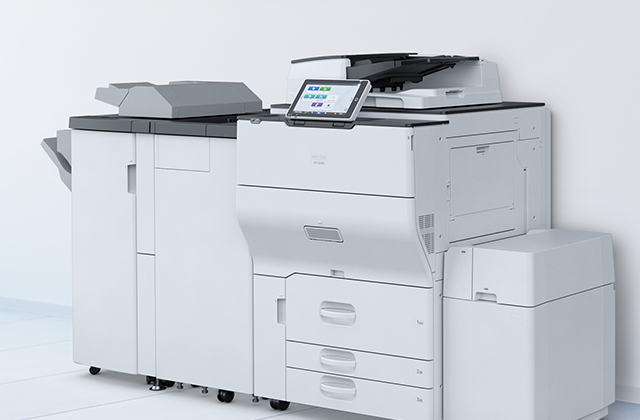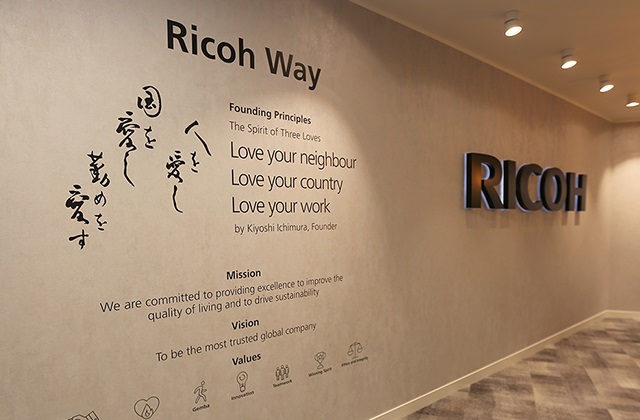Three simple steps to ensure branded communications hit the mark
By David Mills, CEO, Ricoh Europe
Ricoh Europe, 23 February 2016 – It’s a phenomenon we can all relate to. Coming home from a long day at work to find a mountain of leaflets, brochures, fliers and bills stuffed into our letterbox or piled unceremoniously by the front-door. Add to this the flood of unsolicited emails, texts and calls from brands and the average consumer receives nearly fifty pieces of branded communication each week, according to new research commissioned by Ricoh Europe . With much considered junk mail, it’s a wonder we have the time to find what’s actually relevant to us. In fact, most of us don’t.
So how should businesses ensure their communications, and therefore their services, stand-out to consumers? The answer lies in the data provided by the customers themselves. Through every touch-point with a customer, businesses learn extra pieces of the puzzle which reveal what’s important to that individual. With some intelligent insight, this can be mapped against product offerings to deliver a highly customised service and interaction.
Whether you opt to use an in-house programme or seek the consultancy and expertise of an experienced provider, using a customer communication management tool, businesses must make sure they address three critical elements of customer relationship management:
- Fill in the gaps - As companies grow, customer data can become highly siloed. This can cause significant difficulty in building an accurate image of who you’re trying to target. It is imperative businesses work to connect critical data sources so all customer information is stored in a single, easily accessible and coherent base. Over time, as new data continues to emerge from every touch-point, this hub must be added to in order to create a richer profile and understanding of the customer.
- Re-engineer and make relevant - Customer data needs to be integrated with the content most appropriate to their individual circumstances. Organisations should create documents to ensure critical information can be easily re-engineered to make it personalised and relevant. In a financial services organisation, for example, different mortgage products can be mapped against data to identify who an offer would be most relevant to. This specific information can then be communicated to the right individuals using an easily modifiable standard template.
- Right person, right format - Nearly half of consumers prefer a combination of both paper and online communications, and 6-in-10 consumers also claim the quality of printed communications directly impacts their perception of the business. Armed with the knowledge as to what format a customer likes to receive information, outputs and workflows can be directed to either a print room or digital system as appropriate.
The effects of information overload are proving chaotic for consumers. Faced with the task of shifting through the junk to find what’s relevant to them, research commissioned by Ricoh Europe reveals that 25 per cent of consumers have missed a payment deadline and 39 per cent have missed offers and discounts from brands. With nearly 70 per cent also frustrated at the amount of irrelevant communications they receive, it shouldn’t be a surprise that consumers are firmly saying “enough, is enough”.
Consumers have never felt more empowered to interact with businesses on their own terms – the power and reach of mobile and social media being significant contributing factors. As a result, they’re ready to ditch the brands who they feel don’t communicate with them as they should. Nearly 7-in-10 consumers claim they’d be less loyal to a brand communicating with them using irrelevant information, and 6-in-10 consumers would also spend less . So this isn’t just about annoying customers, it’s about totally losing their trust and loyalty. The most successful businesses will be those making use of their customers’ data to inform highly targeted communications. The good news is that customers are also on-board with this idea. The same research reveals that 80 per cent of consumers are willing to share personal information to ensure the messages they receive from brands are relevant.
The lesson for brands is clear; get communications right, or step aside for your competitor who will.
| About Ricoh |
Ricoh is empowering digital workplaces using innovative technologies and services that enable individuals to work smarter from anywhere.
With cultivated knowledge and organizational capabilities nurtured over its 85-year history, Ricoh is a leading provider of digital services, information management, and print and imaging solutions designed to support digital transformation and optimize business performance.
Headquartered in Tokyo, Ricoh Group has major operations throughout the world and its products and services now reach customers in approximately 200 countries and regions. In the financial year ended March 2022, Ricoh Group had worldwide sales of 1,758 billion yen (approx. 14.5 billion USD).
For further information, please visit www.ricoh-europe.com
© 2023 RICOH COMPANY, LTD. All rights reserved. All referenced product names are the trademarks of their respective companies.
For further information, please contact:
Ricoh Europe PLC
Charlotte Fernandez
E-mail: media@ricoh-europe.com
Homepage: www.ricoh-europe.com
Join us on Facebook: www.facebook.com/ricoheurope
Follow us on Twitter: www.twitter.com/ricoheurope
Follow us on LinkedIn: http://linkedin.com/company/ricoh-europe
Visit the Ricoh media centre at: www.ricoh-europe.com/press














